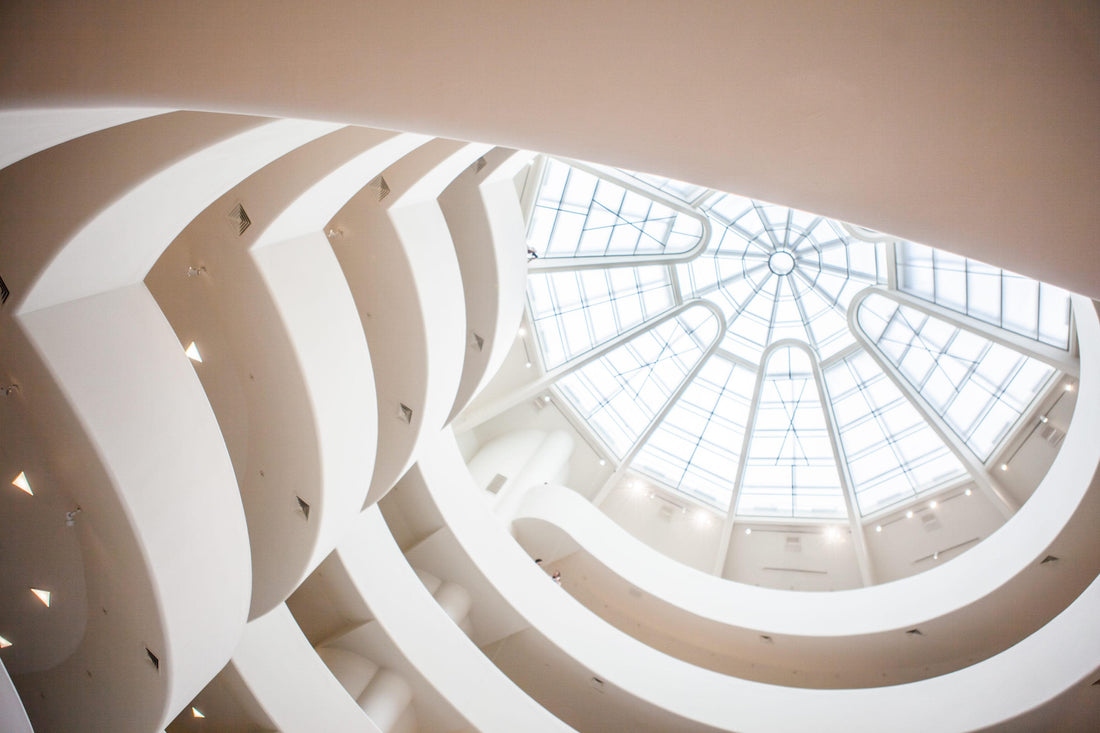
Exploring the Iconic Guggenheim Museum: A Fusion of Art and Architecture
Nestled in the heart of Manhattan, the Guggenheim Museum stands as a testament to visionary design, artistic innovation, and a commitment to showcasing the world's most captivating artworks. Renowned for its distinctive spiral architecture and an extraordinary collection of modern and contemporary art, the Guggenheim Museum offers a unique and immersive experience that transcends the boundaries of traditional art spaces. Let's embark on a journey to discover the allure, history, and artistic legacy of the Guggenheim Museum.
A Striking Architectural Marvel
Designed by the legendary architect Frank Lloyd Wright, the Guggenheim Museum's architecture is a work of art in itself. The building's iconic spiral design, often referred to as the "inverted ziggurat," defies convention and creates a sense of continuous movement. The spiral ramp winds its way upwards, creating a flowing space that seamlessly connects different levels of the museum. This design concept was a departure from the static, boxy structures of traditional museums, and it has since become an emblem of architectural innovation.
The exterior of the Guggenheim Museum is characterized by its gleaming white facade and rounded contours. The building's form is a harmonious blend of geometric shapes, which both contrasts and complements the surrounding urban landscape. As visitors approach the museum, they are greeted by the inviting sight of the spiraling ramp, drawing them into an exploration of art and space.
A World-Class Art Collection
While the architecture of the Guggenheim Museum is undeniably captivating, it is the art within its walls that truly steals the spotlight. The museum's collection spans a diverse range of modern and contemporary artworks, encompassing paintings, sculptures, drawings, photography, and new media. Artists from around the world have contributed to the collection, resulting in an eclectic ensemble that reflects the evolution of art over the 20th and 21st centuries.
Visitors to the Guggenheim Museum can expect to encounter works by some of the most influential artists in history. From the abstract masterpieces of Wassily Kandinsky to the bold creations of Pablo Picasso and the thought-provoking installations of contemporary artists, the museum's collection is a journey through artistic expression in all its forms.
Exploring the Rotating Exhibitions
One of the unique features of the Guggenheim Museum is its rotating exhibitions. Instead of a static collection, the museum curates a dynamic lineup of temporary exhibitions that spotlight specific artists, movements, or themes. This ever-changing landscape ensures that every visit to the Guggenheim offers a fresh and exciting experience.
From retrospectives of iconic artists to showcases of emerging talents, the museum's exhibitions are carefully curated to provide insight into the cultural and artistic dialogues of our time. These exhibitions often challenge conventions, spark conversations, and push the boundaries of artistic interpretation.
The Guggenheim Experience
Stepping into the Guggenheim Museum is an immersive experience that engages all the senses. The spiral design of the building creates a fluid and organic progression through the artworks. As visitors ascend the spiraling ramp, they are enveloped by the art, with each turn revealing a new perspective and a different facet of the collection.
The central atrium, known as the "rotunda," is the heart of the museum. Here, the spiraling ramp converges, allowing visitors to glimpse artworks from multiple levels. The skylight above bathes the space in natural light, casting a warm and ethereal glow on the surrounding artworks. This design element enhances the connection between the art, the architecture, and the viewer.
Architectural Innovation and Preservation
Frank Lloyd Wright's architectural masterpiece, the Guggenheim Museum, has not only left an indelible mark on the world of art and design but also presented unique challenges in terms of preservation and conservation. The innovative design, while groundbreaking, requires meticulous care to maintain its structural integrity and ensure the safety of visitors.
Over the years, the Guggenheim Museum has undertaken significant renovation and restoration projects to preserve Wright's vision while accommodating the needs of a contemporary museum space. These efforts highlight the museum's commitment to honoring its architectural heritage while embracing modern advancements in conservation technology.
Visiting the Guggenheim Museum
For those planning to visit the Guggenheim Museum, careful planning is recommended to make the most of the experience. The museum's website provides information about current exhibitions, opening hours, admission fees, and guided tours. Given the popularity of the museum, it's advisable to purchase tickets in advance to avoid long lines.
While exploring the museum, take advantage of the guided tours and educational programs that provide deeper insights into the artworks and the history of the building. The Guggenheim Store offers a selection of art books, unique gifts, and exhibition-related merchandise for those looking to take a piece of the Guggenheim experience home.
In Conclusion
The Guggenheim Museum is more than a repository of art; it's a space where art and architecture coalesce to create an immersive and transformative encounter. Its spiral design invites visitors to embark on a visual journey through time, culture, and creativity. From its inception, the museum has embraced innovation, challenged conventions, and celebrated the boundless potential of artistic expression. Whether you're an art enthusiast, an architecture lover, or simply someone seeking inspiration, the Guggenheim Museum offers an unparalleled experience that ignites the imagination and reminds us of the enduring power of human creativity.
